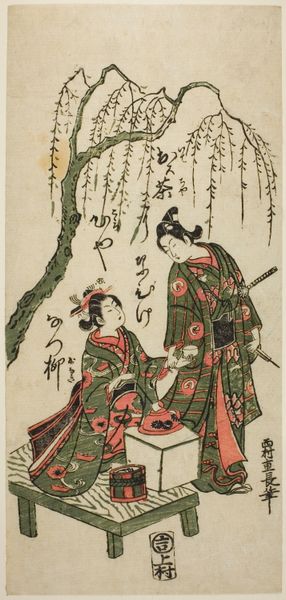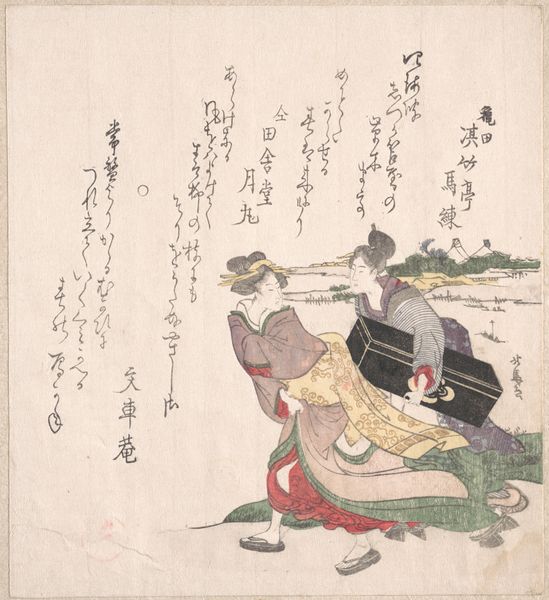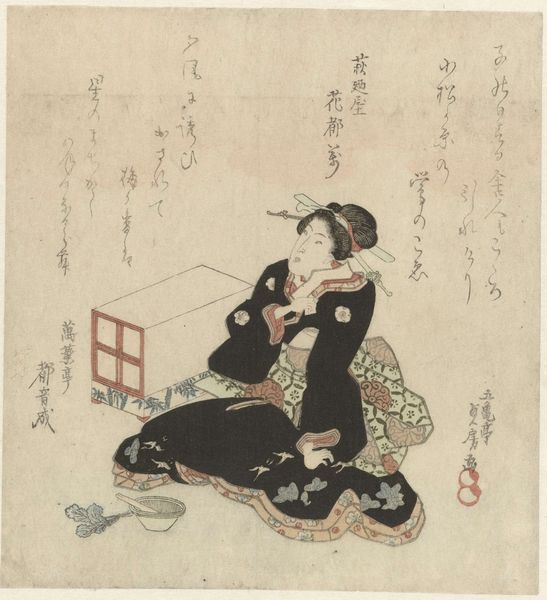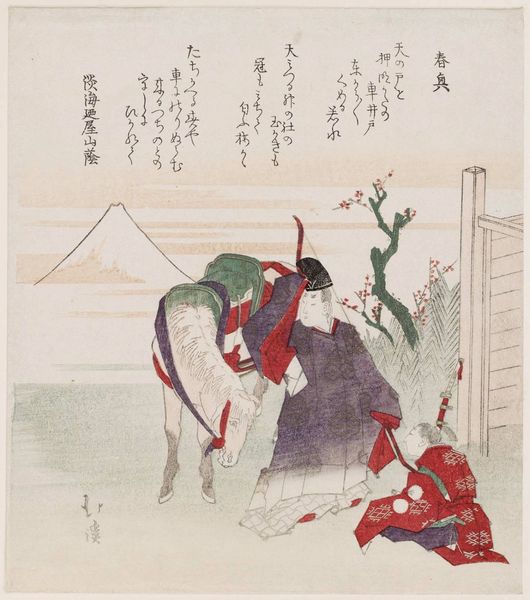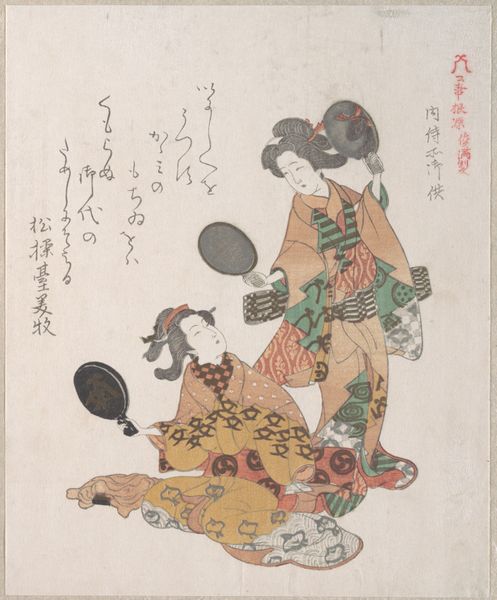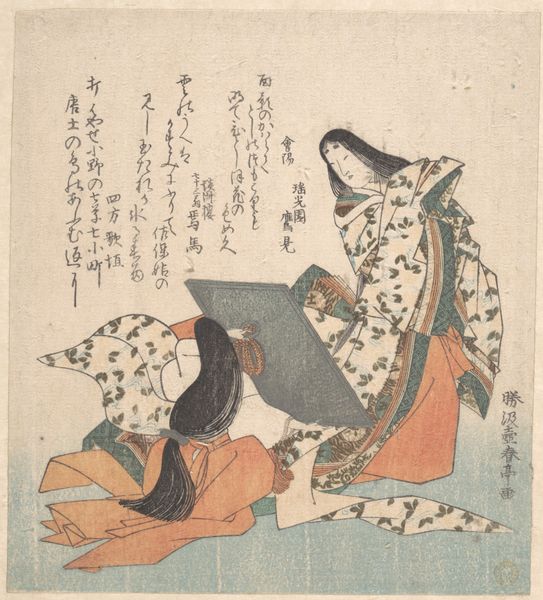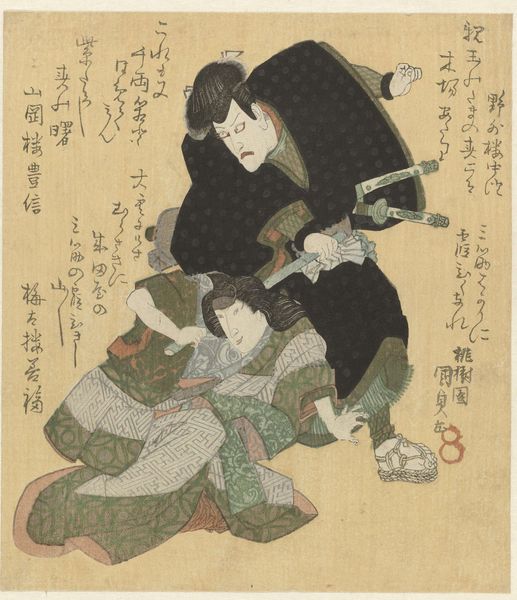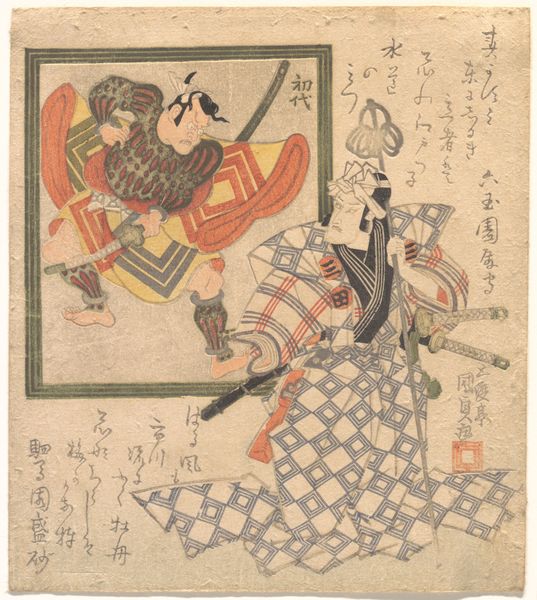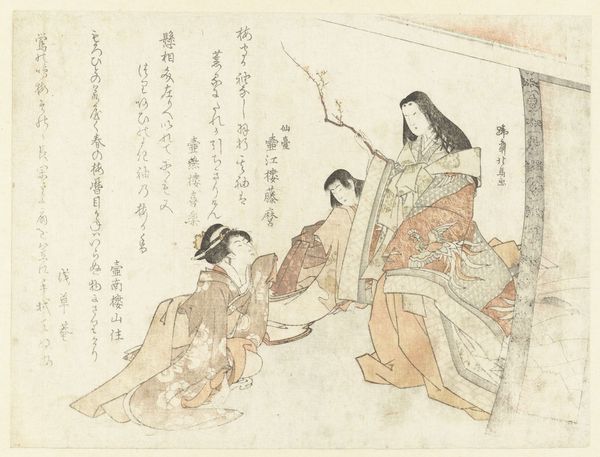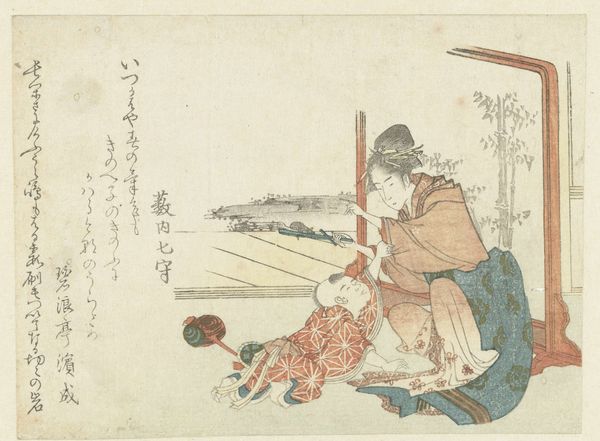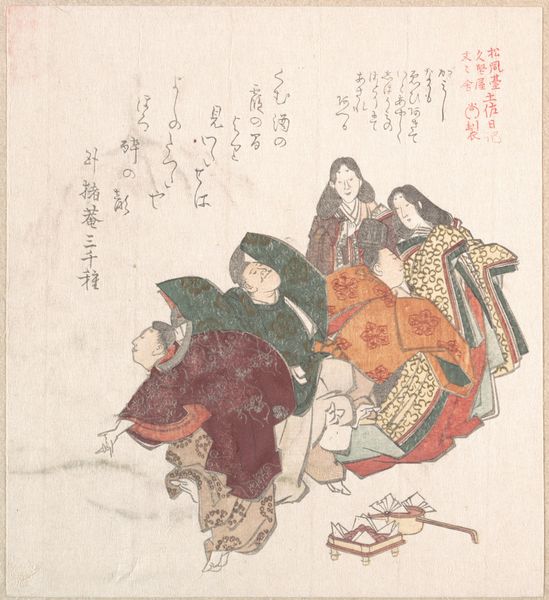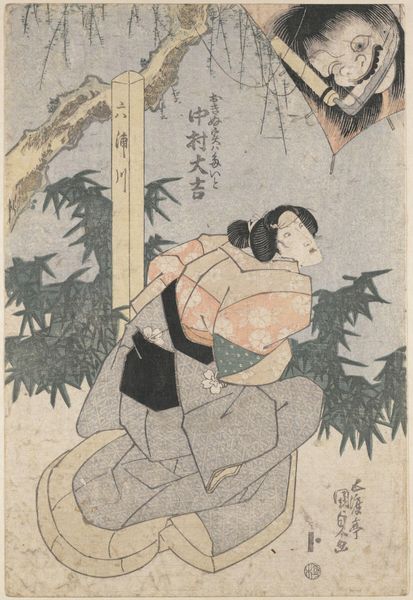
(Woman Looking at the Man with mirror and Sword) c. 1816 - 1819
0:00
0:00
print, ink
#
portrait
#
narrative-art
# print
#
ukiyo-e
#
ink
#
genre-painting
Dimensions: 7 15/16 x 7 in. (20.2 x 17.8 cm) (image, sheet)
Copyright: Public Domain
Curator: This print, tentatively titled "(Woman Looking at the Man with mirror and Sword)", dates back to between 1816 and 1819, and is the work of Teisai Hokuba. It's an ink print, currently held at the Minneapolis Institute of Art. Editor: My initial impression is one of intimacy mingled with a certain unease. The way the woman gazes, combined with the presence of that rather imposing sword… It's suggestive, definitely thought-provoking. Curator: Indeed. It encapsulates several key elements of Ukiyo-e. Hokuba often depicted genre scenes—moments from everyday life elevated to art. This particular piece is a striking example of narrative-art within that tradition. Editor: The male figure is particularly interesting. Is he applying make-up, perhaps? And what are we to make of this juxtaposition of domesticity and violence so starkly rendered by the sword and the tender focus on grooming? Is it subverting notions of masculinity? Curator: Precisely! We need to contextualize these depictions within the socio-political environment of the time. How were gender roles constructed and performed in early 19th century Japan? Whose gaze are we really seeing reflected in the mirror? Editor: The setting and composition also seem to have significance. The sword appears carelessly thrown down, as if it doesn't naturally belong, and the elegant textile pattern on the woman's kimono indicate her social standing. It's intriguing what stories might these elements be speaking to if we listen close. Curator: Consider, too, the institutional forces that shaped this work. Printmaking was more accessible than painting; allowing a broader audience to engage with such narratives. Ukiyo-e were key to cultural exchange at that time, conveying specific values or aspirations. Editor: So, this image operates on many layers then. What might at first glance seem like a simple snapshot of daily life can lead into questions regarding performance, class, and cultural expectations. Curator: Exactly! It is a wonderful challenge to reassess received knowledge and challenge what we *think* we see. Hokuba invites us into a richly textured social scene that speaks volumes about the fluidity of representation and the dynamics of power, even today. Editor: A poignant reminder that visual narratives, whether in the 19th or 21st century, consistently reflect, shape, and contest our understanding of ourselves and each other.
Comments
No comments
Be the first to comment and join the conversation on the ultimate creative platform.


